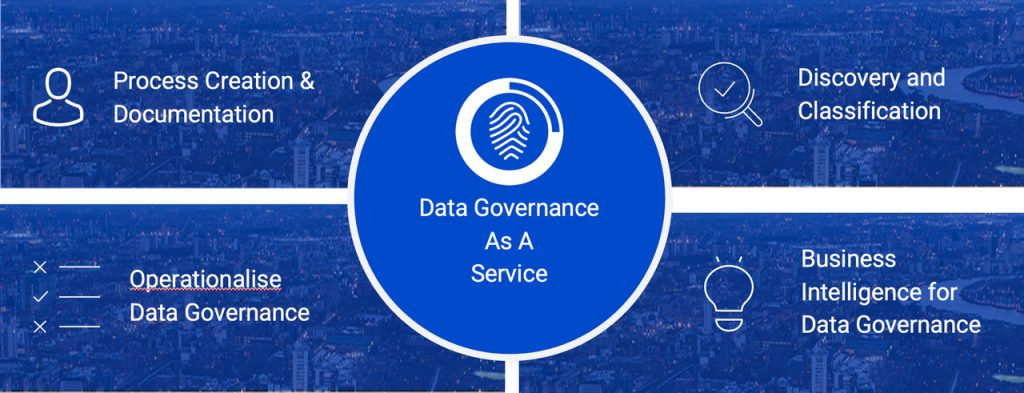When arguably a company’s biggest asset is its data, data governance is a key starting point for setting the parameters for how to use that data. The how, where, why, who of managing data is vital for improving data quality and making it usable, secure and most importantly trusted to make intelligent business decisions. Organisations are therefore faced with a big decision: embrace effective data governance to deliver growth, innovation and compliance, or risk competitive advantage and the penalties of failing to meet regulations, says Michael Queenan, co-founder and CEO of Nephos Technologies.
Data governance inertia
Despite business leaders realising the value of data governance, many are not moving forward with it. This can be for a variety of reasons: a lack of budget or an agreed plan for effective data governance or a shortage of the skills to deliver on their existing data governance tools. Delivering on the transformational potential of data has elevated the responsibility to protect and appropriately use information of any customers, partners, or employees in the ecosystem, increasing the importance of data governance for compliance purposes.
According to recent research by Nephos Technologies of 900 decision-makers of CIO / CISO / DPO calibre, a quarter of UK businesses are failing to get value from their data governance programmes and almost one fifth (18%) admit to only just getting started. Nearly half (46%) state they don’t have the skills or expertise to properly utilise the tools they have invested in.
The research reveals that organisations understand the business benefits of good data governance. However, it has also exposed the challenges leaders face in successfully implementing their data governance programmes. These include a lack of expertise (38%), difficulty justifying the business case (38%), as well as lack of effective tools (37%); executive support (33%); and cost (32%).
It’s also common for businesses to invest in data governance tools yet be unable to drive the right value. In fact, any unoptimised gaps in strategy can disturb the governance process, causing short and long-term problems. Some organisations are confused about what good data governance means and where to start.
The meaning of data governance
The Data Governance Institute’s definition is, “Data Governance is a system of decision rights and accountabilities for information-related processes, executed according to agreed-upon models which describe who can take what actions with what information, and when, under what circumstances, using what methods.” It is the process of managing the availability, usability, integrity and security of data in enterprise systems.
It’s a simple enough definition, so perhaps a lack of understanding of its true value is holding back organisations from developing a clear and robust data governance plan.
Understanding the ROI of data governance
C-suite-level executives are typically drawn to the corporate risk element of data governance, focusing on GDPR, data compliance issues and their corporate risk rating. But there’s a tendency to overlook actual levels of GDPR compliance maybe not even knowing what’s been lost if there was a data breach therefore, good data governance is not being addressed.

The concept of ROI doesn’t easily apply to data governance, as its impact is usually only evident when something goes wrong, for instance a cybersecurity breach. Without being able to define a value, it can be shelved in favour of bigger priorities.
Yet the Nephos survey confirmed respondents’ appreciation of the benefits of a data governance programme. Executives’ top objectives included improved data quality (39%); compliance with regulatory requirements (37%); to drive efficiencies and costs (36%); and a higher quality of data analytics and insights (35%). Others included minimising financial risk, enhancing data privacy / security and fast access to relevant data.
The importance of data classification
Following best practice in data governance will keep organisations on the right path to success. One key first step should be to define what data classification looks like for each unique situation. Customer data is held in disparate locations and getting this data correctly identified and classified is vital for good governance whether it’s public, private, confidential or restricted. Following this, it’s sensible to apply gap analysis to check for violations, perhaps restricted data sitting on public sources. Without it, any attempts at data governance are likely to fail.
Businesses can’t afford to overlook effective data discovery and classification. If teams with the responsibility for delivering data governance assume that there are tools out there that can be given access to data sources to analyse and identify governance violations instantaneously, they will be ineffective. There is a fundamental need to set out what you are looking for and what you want the data to accomplish, or you’ll fail to unlock the desired business value.
The emerging role of data governance-as-a-service (DGaaS)
Data governance is a complex process with many moving parts, ranging from data quality, master data management and the challenges presented by encryption, to choosing the right technology tools and the enforcement of policies.
In embracing DGaaS to drive business improvement or transformation and robust regulatory compliance, organisations are looking to the ‘as-a-Service’ model to bridge the gaps in data governance capabilities, experience, and technologies that destine many projects to fail. This approach is designed to remove the risk of investments and deliver the strategy and proven technologies required to ensure data governance projects succeed.
Organisations need clear signposting to an orderly approach to DGaaS, as everything can’t be achieved at once. Good data governance requires vision rather than just tactics and it won’t happen overnight. It should be a long-term journey backed with a robust framework, rather than a standalone data project.
Across a wide range of use cases, DGaaS can be applied to each major component required to deliver good data governance. This begins with a data discovery and classification phase, using software tools to scan all data wherever it resides. With this detailed insight, organisations can easily identify their data assets, where data is mishandled and be more in touch with their risk levels.
The next phase of the data governance process focuses on effective process creation and documentation, removing the operational and expertise burden and leaving them free to focus on value creation from data. Organisations now have the ability to apply these outputs from the toolsets to realise tangible business outputs.
This enables teams to take a more streamlined approach to the planning, design and delivery of a data governance strategy which is closely aligned to their core objectives. The technology acts as a catalyst for successful data governance, navigating the time-consuming minefield of implementation roadblocks.
Focusing on the transformation potential of data
The most important realisation for leaders is that they can make the most of what they already have their data to transform their businesses. While data governance can play a valuable part in this, many organisations still struggle to derive maximum value from their data governance programmes.
Aligning data governance initiatives to business objectives and ensuring access to the right human skills and experience alongside proven, integrated tools will support the process effectively. Through ensuring that data assets are formally managed, the C-suite and business function leaders will have clarity about the business and trusted data to enable transformational business decisions.
The author is Michael Queenan, co-founder and CEO of Nephos Technologies.
Comment on this article below or via Twitter: @VanillaPlus OR @jcvplus






